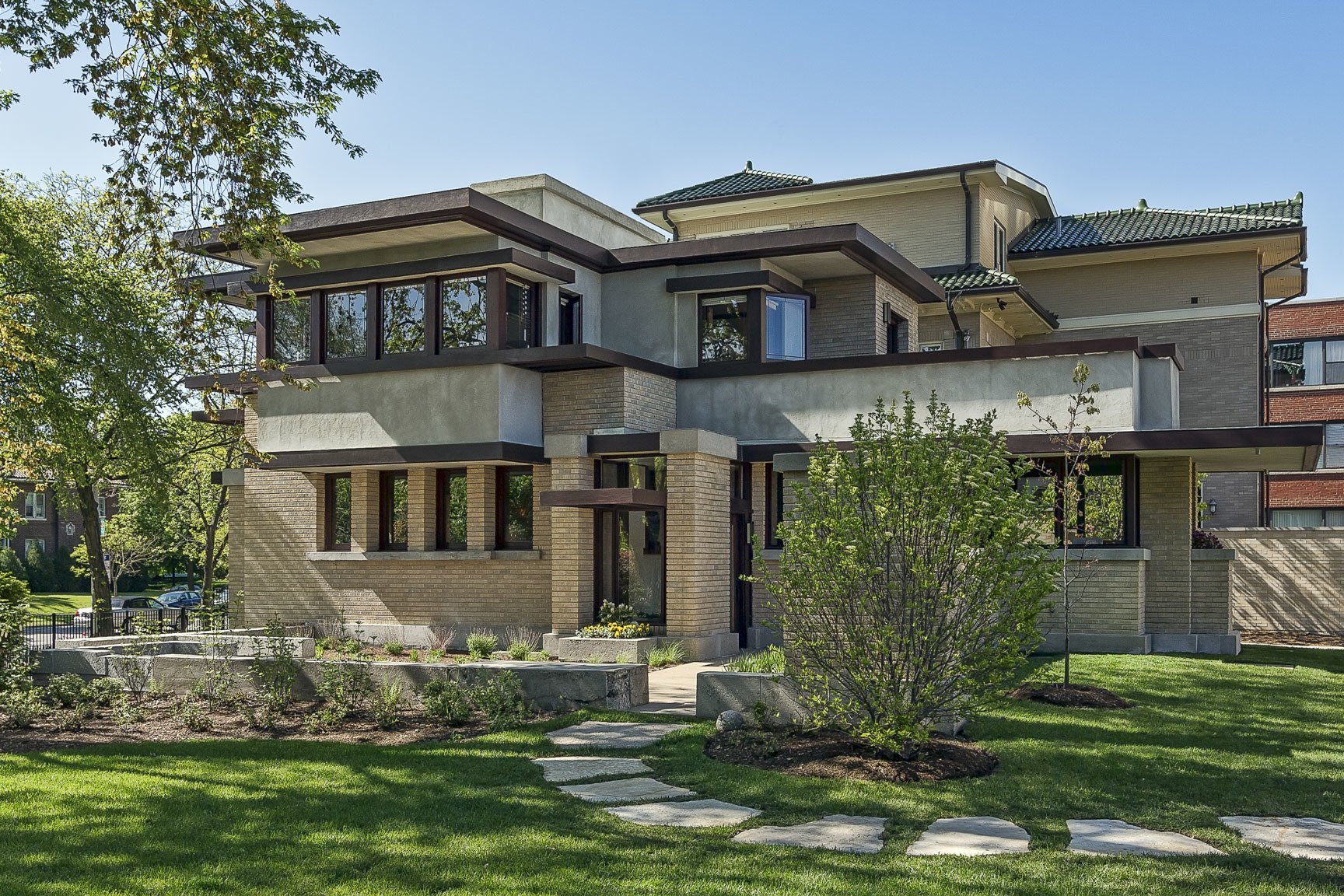#12046. Modern Prairie Façade: Horizontal Geometry and Natural Harmony

This is an outstanding example of a modern interpretation of Frank Lloyd Wright's architecture, particularly his famous "Prairie School" style. The façade of the building demonstrates characteristic horizontal lines with projecting cornices and flat roofs, creating a sense of unity with the surrounding landscape. The compositional solution is based on a stepped organization of volumes, where each level seems to grow out of the previous one.
The façade materials harmoniously combine light brick with plastered surfaces in neutral tones, emphasizing the horizontal geometry of the building. Particularly noteworthy are the windows with characteristic dark framing and geometric pattern of mullions, creating a rhythmic pattern and providing abundant natural lighting to the interiors. Vertical brick elements serve as visual supports, emphasizing the structural integrity of the building.
The landscape design with stone pathways and strategically placed shrubs complements the architectural composition, facilitating an organic transition from the structure to the natural surroundings. In modern private construction, the application of techniques such as projecting horizontal cornices, combination of different textures (brick, stucco), geometrically precise window openings, and terraced volumes can significantly enrich the aesthetics of the façade and create an expressive architectural image with references to classic modernist traditions.